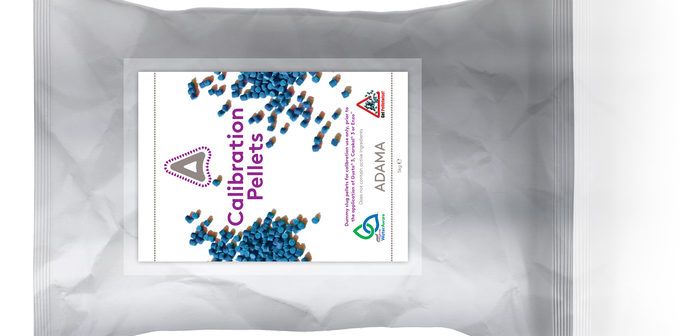Adama is urging arable growers to make every slug pellet count this season by applying the right pellet at the right time and at the right dose. In doing so, the crop protection company hopes growers can minimise the impact of key molluscicide active ingredient, metaldehyde, on drinking water quality and environmental diversity.
“Our ongoing commitment to promoting the responsible use of agrochemicals and reducing the threat of key active ingredients being lost means we’re asking growers to think carefully about how and when they apply slug pellets,” explains Andy Bailey, Adama’s Fungicide and Molluscicide Technical Specialist. “That means ensuring all spreading equipment is properly maintained and calibrated before pellets are applied.”
To enable accurate spreader calibration without the use of live slug baiting pellets, Adama is giving away a limited number of 5kg bags of placebo pellets which are a perfect copy of the company’s own metaldehyde based slug pellets.
“Whilst these dummy pellets perfectly replicate the ballistic characteristics of products such as Gusto 3, Carakol and Enzo, they don’t contain any active ingredient,” Andy continues. “Since we launched this year’s pellet giveaway a month ago we’ve had such an overwhelmingly positive response that we’ve decided to order a second batch which growers can apply for by visiting the www.adama.com/uk website.”
Being precise in terms of slug pellet applications also comes down to pellet quality, as Andy explains. “The key to effective and sustainable slug control is to use a bait which not only offers high mortality rates, but which is also highly palatable and which retains its integrity over a long period of time, even in persistently wet conditions.”
Gusto 3, Enzo and Carakol pellets meet all these requirements thanks to their 3% metaldehyde content and a unique pellet design: the pellets are made from high-grade Durum wheat flour which is wet mixed, extruded and then dried using Desidro® technology – a two-stage process that microwaves the pellet to dry the inside before using a standard heating system to dry the exterior.
“This ensures an ideal balance between persistence and palatability, with Adama’s slug pellets proving hard enough to ensure excellent weather resistance and longer activity, but also remaining attractive to slugs even when first applied,” Andy adds.
The third element to ensuring that the right pellet is applied at the right time and right dose is to ensure the latest best-practice stewardship guidelines, such as those outlined on the www.getpelletwise.co.uk website, are adhered to. “Essentially this means minimising the risk to water and wildlife by preventing pellets from landing within 10 metres of any field boundary, hedge or watercourse, using the minimum dose to avoid drainage and run-off losses, and not applying when heavy rainfall is forecast or if field drains are flowing,” Andy continues.
For growers in any doubt about when it is appropriate to apply slug pellets, Andy advocates Adama’s WaterAware featuring #SlugAware app* to a) predict likely levels of slug activity, and b) determine if climatic and soil conditions are suitable for applications to be made.
“By considering factors such as soil type, humidity, soil moisture, temperature, cultivation method, wind and current and previous crops, the app predicts a low, medium or high threat of slug activity in a given 24 to 72 hour period.
“With this information to hand, growers can make better informed crop protection decisions, thereby ensuring key active ingredients, such as metaldehyde, are only ever applied at the right time and thus reducing the risk of these chemicals being lost from the crop protection armoury due to regulatory pressures,” Andy concludes.




